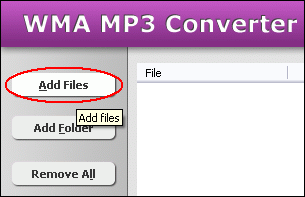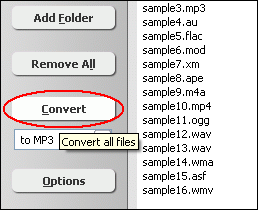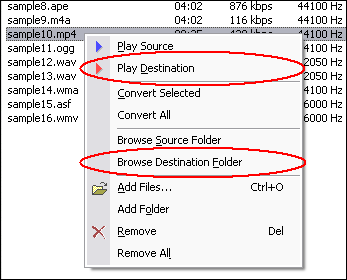WAVE64 to WMVConvert WAVE64 to WMV, WAVE64 to WMV Converter |
 |
| Home | Getting Started | Download | Buy Now! | Screen Shots | FAQ | Support | Contact |
WAVE64 to WMV Converter converts WAVE64 to WMV. The software is an ALL-IN-ONE audio converter that supports more than 100 audio and video files. WAVE64 to WMV Converter supports batch conversion and, is full compatible with Vista and Windows 7.
What is WAVE64? The Sony Wave64 file format is defined as a true 64 bit file format that allows to overcome the limitations of the RIFF/WAVE format. The file format was originally defined by Sonic Foundry. In Summer 2003, Sony Pictures Digital acquired Sonic Foundry's Desktop Software assets. Since then, the new format is officially promoted as Sony Pictures Digital Wave 64. Companies are encouraged to support this format and no royalties have to be paid to use it. The Sony Wave64 file format is very similar to the well known RIFF/WAVE format. Therefore, existing software implementations of RIFF/WAVE file filters are likely to be extendable to support the Sony Wave64 file format with little programming effort. Because of the similarities to the RIFF/WAVE format, only the differences between these formats are described. It is assumed that the reader is familiar with the original format as defined by Microsoft. What is WMV? A WMV file is in most circumstances encapsulated in the Advanced Systems Format (ASF) container format. The file extension .WMV typically describes ASF files that use Windows Media Video codecs. The audio codec used in conjunction with Windows Media Video is typically some version of Windows Media Audio, or in rarer cases, the deprecated Sipro ACELP.net audio codec. Microsoft recommends that ASF files containing non-Windows Media codecs use the generic .ASF file extension. The ASF container can optionally support digital rights management using a combination of elliptic curve cryptography key exchange, DES block cipher, a custom block cipher, RC4 stream cipher and the SHA-1 hashing function. Although WMV is generally packed into the ASF container format, it can also be put into the AVI or Matroska container format. The resulting files have the .AVI and .MKV file extensions, respectively. WMV can be stored in an AVI file when using the WMV 9 Video Compression Manager (VCM) codec implementation. Another common way to store WMV in an AVI file is to use the VirtualDub encoder. Windows Media Video (WMV) is the most recognized video format within the WMV family. Usage of the term WMV often refers to the Microsoft Windows Media Video codec only. Its main competitors are MPEG-4 AVC, AVS, RealVideo, DivX, and Xvid. The first version of the codec, WMV 7, was introduced in 1999, and was built upon Microsoft's implementation of MPEG-4 Part 2. Continued proprietary development led to newer versions of the codec, but the bit stream syntax was not frozen until WMV 9. While all versions of WMV support variable bit rate, average bit rate, and constant bit rate, WMV 9 introduced several important features including native support for interlaced video, non-square pixels, and frame interpolation. WMV 9 also introduced a new profile titled Windows Media Video 9 Professional, which is activated automatically whenever the video resolution exceeds 300,000 pixels (e.g., 528x576, 640x480 or 768x432 and beyond) and the bitrate 1000 kbit/s. It is targeted towards high-definition video content, at resolutions such as 720p and 1080p. Convert WAVE64 to WMV Related Topics: MPGA to WMV, M4A to WMV, MIDI to WMV, FLAC to WMV, MPC to WMV, OGG to WMV, GSM to WMV, RAM to WMV, AIFF to WMV, MPP to WMV, M2A to WMV, CAF to WMV, WAV to WMV, OGA to WMV, SPX to WMV, ALAW to WMV, MKA to WMV, SHN to WMV, W64 to WMV, OMA to WMV, RMJ to WMV, VOC to WMV, RMI to WMV, MOD to WMV, SOL to WMV, AWB to WMV, ADX to WMV, AAC to WMV, SND to WMV
|
| Home | Getting Started | Download | Buy Now! | Screen Shots | FAQ | Support | Contact | Links |
| Copyright © 2007-2014 Hoo Technologies All rights reserved. Privacy Policy |





